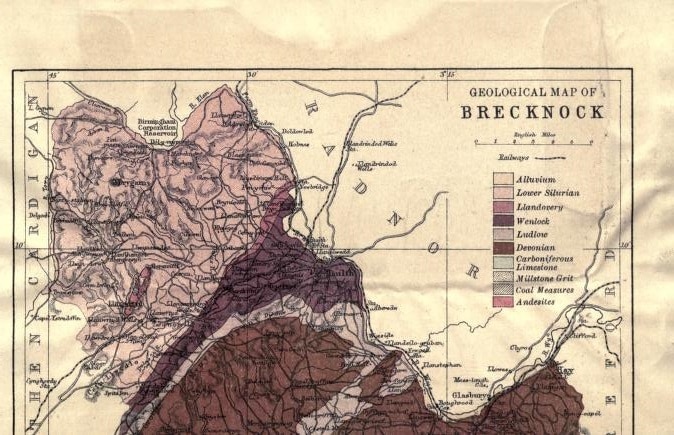Breconshire


History
When the Romans made their appearance in the islands of Britain, the district now forming the south- eastern corner of Wales was known to the Britons as Essyllwg, and was inhabited by a tribe known as Essyllwyr. These names the Romans translated into Latin as Siluria and Silures respectively. Siluria comprised most of the present counties of Glamorgan and Breconshire, the whole of Monmouthshire, and some other outlying tracts now forming parts of English counties. It was divided into districts, probably under sub-chiefs, and of these a tract of country called Garth Madryn was one. We do not know the actual extent of this district, but, roughly, it was contained within the boundaries that now mark the present county of Breconshire, with the possible exception of the hundred of Builth.
Garth Madryn, we are told, means “Fox Hill” or “Fox Hold,” and was thus named because it formed the home of large numbers of those animals. Perhaps the name was only given to a small portion of the district at first and was afterwards extended to include the whole area we have outlined.
Still this does not help us to understand how the county received its present name. Neither does it tell us what it means. For this information we must come to a period several hundreds of years later, in fact to the period of the departure of the Romans. About this time the Welsh prince of Garth Madryn was a man named Brychan, and in his honour it was renamed Brycheiniog or Brycheiniawg that is, the Land of Brychan. From that time onwards its princes or rulers were always described as of Brycheiniog, and in later times still, when the Normans took most of the district from the Welsh, the name was still retained to designate the Lordship formed by the Norman conqueror who was known as the Lord of Brycheiniog.
The Normans half-translated the word Brycheiniog, and after some changes the word they used in time became fixed as Brecknock, or as it is nowadays written, Brecon. To the Welsh the name is still Brycheiniog, and when we speak of Breconshire we say Sir Frycheiniog. The difference in spelling is simply due to a grammatical rule which alters the first letters of many words in the Welsh language. For a long period the names Brecon- shire and Brecknockshire have been used indiscriminately for our county, but in 1910 the County Council, by resolution, determined that the form Breconshire shall be used in all official documents. This may have the effect of standardising the name of the county, and to harmonise with the official nomenclature we shall use the name “Breconshire” in the pages of this book.
We have read in one or two sentences the words “County of Brecon.” Strictly speaking this is not correct, as Brecon is not a county in the sense that the English counties Kent, Surrey, and Sussex are. Brecon is what is termed a “shire,” that is, it was formed from a share of a larger district, i.e. the part shorn off, for the two words have a common origin in the A.S. scir, to cut, to divide. For many years, even after the death of Prince Llewelyn in 1282, the Lordship of Brecknock continued as a Lordship Marcher, and it was only given the privileges that belong to our counties and shires in the reign of Henry VIII. During that reign an Act of Parliament was passed that divided such portions of Wales as had not already been made shire-ground into shires, and of these Breconshire was one. So, to be correct, we should always speak or write of the shire as Breconshire, and not as Brecon as if it were a county.
(SOURCE: Evans, Christopher. Breconshire. Cambridge: University Press, 1912.)
Breconshire
Queries and Surnames
Submit and View Queries and Surnames Submit a Query or Surnames for your lost Breconshire ancestor. Please use the linking feature only for genealogical material otherwise your query may be deleted.